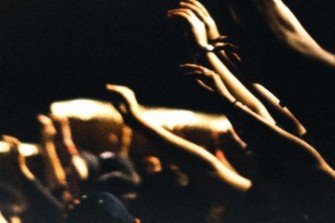In Noise, the authors explore the consequences of our often hasty thinking, as evidenced by variation (noise) in judgement and decision making. Judgement is described as ‘a form of measurement in which the instrument is the human mind’.
The book opens with two studies of decisions, one in judges’ sentencing and the other in premium underwriting. Federal judges in the United States, across a group of hypothetical cases, had consensus in only a few cases and sentencing ranged from a few years to life for the same offence.
Insurance underwriters, given the same risk information, demonstrated a median variance of 55% in premium setting. On one hand, this is costing insurance companies hundreds of millions of dollars, and, on the other, individuals years of unjust incarceration.
At the outset, the difference between bias and noise is made clear using the analogy of a rifle range target. Shots grouped consistently but off-centre show bias. Widely scattered shots are simply noisy. Noise and bias are independent of one another. Our focus is usually on the more visible bias but not on noise in general. “In real world decisions, the amount of noise is often scandalously high”. Noise is the big problem and exists in many areas. The authors cite decisions in medicine, child custody, forecasting, asylum seekers, personnel, bail, forensics and granting of patents.
“The surprises that motivated this book are the sheer magnitude of system noise and the amount of damage it does. Both of these far exceed common expectations.”
Noise is variability in judgements that should be identical. System noise is observed within organisations that use interchangeable professionals to make decisions, e.g., judges, doctors or underwriters. System noise can be further divided into level noise—variability across individuals (their average judgements)—and pattern noise—idiosyncratic responses of an individual to the same information. Pattern noise can be affected by occasion noise (something of the moment), for instance, did the judge’s baseball team win on the weekend or was it an especially good lunch. Sadly true.
Many of the biases, thinking flaws and psychological biases outlined in the Kahneman’s previous book are noted as contributors to noise. But importantly our self-belief continues to be a major blind spot.
“People’s exaggerated confidence in their predictive judgement underestimates their objective ignorance as well as their biases”. In many cases, the use of simple rules, models or, increasingly, algorithms will often achieve higher accuracy than we can. This is of course difficult for us to swallow. We like to think our intelligence, education, experience and even intuition—those things that make us human—also make us great judges and decision makers. In many, but importantly not all areas, of judgement this is not true. The authors note that the goal of judgement is accuracy not individual expression. “This observation leads to a conclusion that will be as unpopular as it is inescapable; judgement is not the place to express your individuality”.
However, it is noted that individuality and creativity are needed, even essential in many phases of thinking and decision making. In the generation of options, choice of goals and novel ways to approach a problem, creativity is desirable for judges. But when it comes to making judgement on these options, expression of individuality is a source of noise. Use of models, rules, guidelines and algorithms lead to better judgements. Algorithms have zero noise but may of course exhibit bias, depending on the programming. The authors provide some comfort that “it is unlikely that algorithms will replace human judgement in the final stage of important decisions”. A workplace that drives out too much of the human element will not be a happy place.
The book concludes with thoughts on how to reduce noise and bias. Much of this is directly applicable to the boardroom. Their research indicates that the very best judges are characterised as actively open minded. They describe these individuals as being permanently in beta mode, never having a final and fixed view, always open for new information and improvement.
Detecting bias in real time can be assisted by having a decision observer looking for signs of bias. A useful checklist is provided, some elements of which we have talked about in other articles:
- taking the outside view
- simple diversity of opinion
- prejudgement
- anchoring bias
- loss aversion (risk appetite)
- confirmation bias (selective use of data).
Decision hygiene is likened to hand washing before surgery; mundane and unsexy but undoubtedly effective in preventing loss of life or, in this case, bad decisions.
Another suggestion is to break major decisions into several independent tasks, ensuring that each is evaluated completely independently of the others The analogy given is not letting witnesses confer before questioning.
Use of intuition to make quick judgements is human and rather satisfying but it is a reward that should not be granted prematurely. “Intuition need not be banned, but it should be informed, disciplined and delayed”. This is consistent with other decision-making research where a pause for reflection is known to produce better outcomes.
Relative judgements prove to be less noisy than absolute ones. Comparison to a known case and judging against it produces less variance.
Finally, decision hygiene actions must be implemented with care. Professionals have egos; narrowing their perceived freedom to think, or bureaucratising decision processes can be undermining and demoralising.
This is a wonderful read for anyone who exercises judgement. Paired with Thinking Fast and Slow, they form a great compendium on the variability and frequent irrationality of the human mind.
image: Babel (2001) Cildo Meireles








